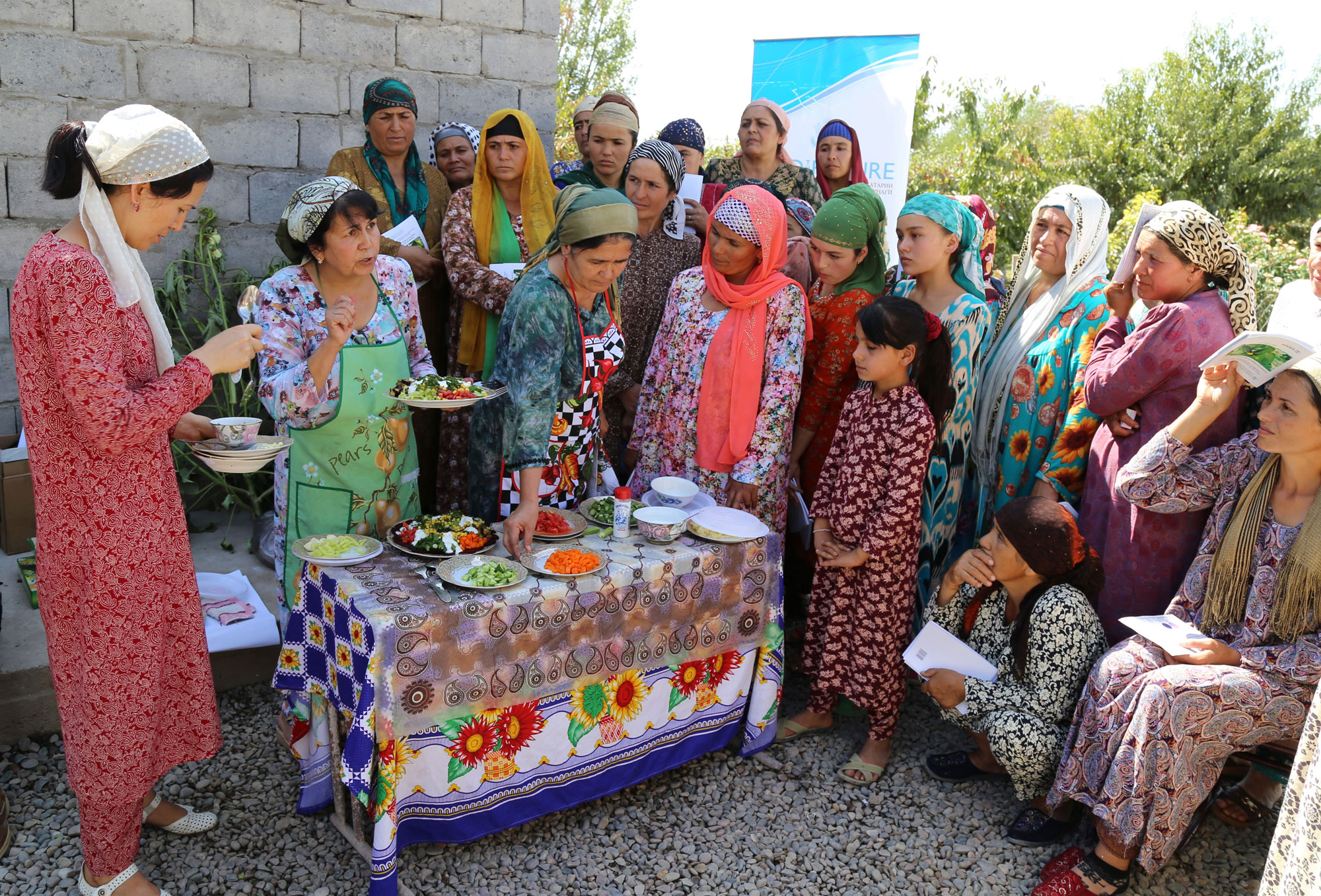This pair of technical briefs provides a snapshot of how one project in Tajikistan used collaborating, learning, and adapting (CLA) to adjust extension training and then evaluated the effectiveness of its CLA approach.
 What does it mean to build a culture of collaborating, learning, and adapting (CLA) in development programs? The USAID Feed the Future Tajikistan Agriculture Water Activity (TAWA), implemented by Chemonics, aims to raise incomes in Tajikistan’s poorest province by directly engaging rural women in agricultural productivity, while also boosting awareness of better nutrition and sanitation behaviors. TAWA leadership understood the value of the knowledge, interest, and energy of targeted women beneficiaries to work as partners in the activity, and created and implemented a unique active learning cycle using a collaborating, learning, and adapting (CLA) approach. The first technical brief linked below provides a snapshot of how TAWA used CLA to adjust extension training and better target participant needs.
What does it mean to build a culture of collaborating, learning, and adapting (CLA) in development programs? The USAID Feed the Future Tajikistan Agriculture Water Activity (TAWA), implemented by Chemonics, aims to raise incomes in Tajikistan’s poorest province by directly engaging rural women in agricultural productivity, while also boosting awareness of better nutrition and sanitation behaviors. TAWA leadership understood the value of the knowledge, interest, and energy of targeted women beneficiaries to work as partners in the activity, and created and implemented a unique active learning cycle using a collaborating, learning, and adapting (CLA) approach. The first technical brief linked below provides a snapshot of how TAWA used CLA to adjust extension training and better target participant needs.
How do we know that efforts in collaborating, learning, and adapting (CLA) are effective? To accompany the CLA technical brief, the second brief linked below details how TAWA staff evaluated their CLA approach by measuring adoption rates of promoted nutrition and sanitation practices. Together, these two technical briefs reveal the importance of engaging early and often to better understand participants, embedding data collection into learning cycles, and acting upon what the data reveals.

